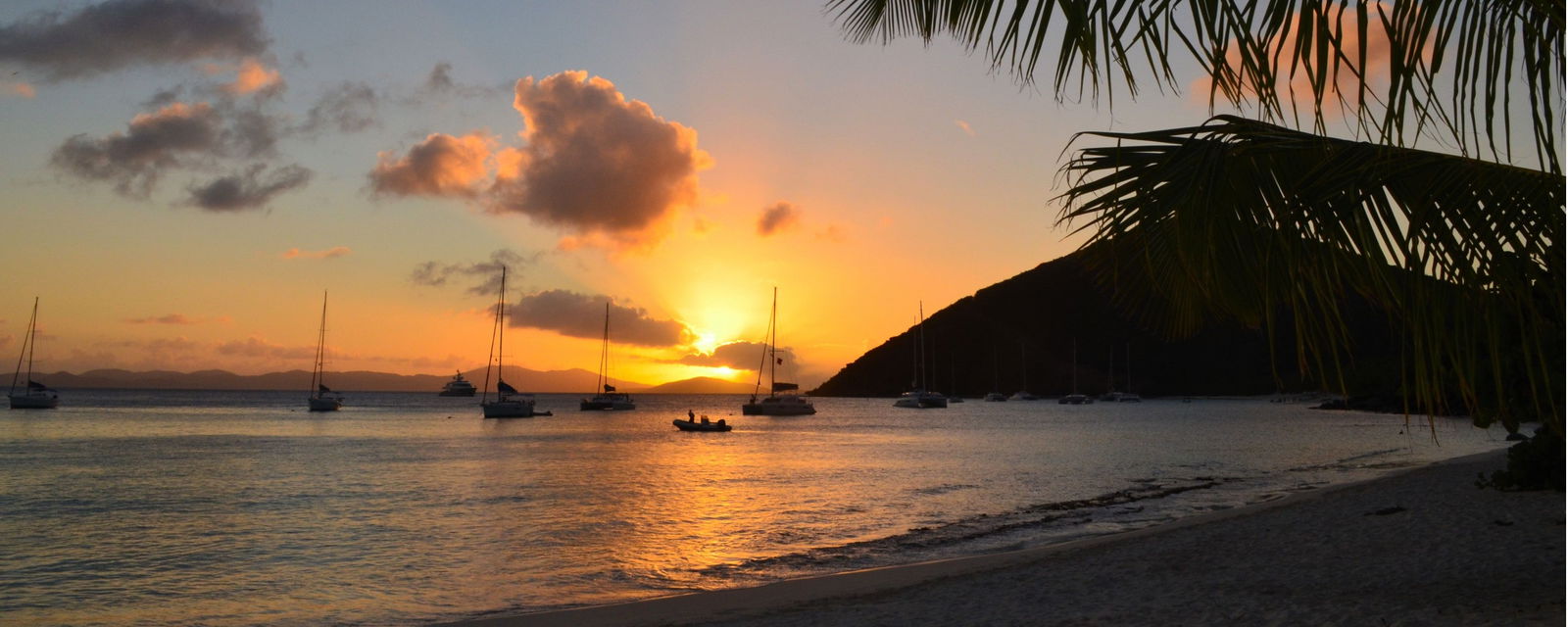


Jost Van Dyke is referred to as “the last virgin island” because it has hardly changed in the last 100 – 200 years. It is the smallest island in the British Virgin Islands measuring just four miles long and is known for its small-scale fishing, subsistence agriculture, and their world-famous beach bars. Visitors must explore Great Harbour, a world-famous port on the island that is most known for its yacht-filled parties, particularly during the holidays. The island was named after the early Dutch settler Joost Van Dyk, and it is said that he was a former pirate who used the Great Harbour as a hideout. Visitors must check out the Bubbly Pool, a place where the sea meets the rock and creates a natural Jacuzzi full of bubbles! And just like any island, there are a plethora of water sports activities to enjoy.
The British Virgin Islands are known for their signature rum drink, the Painkiller, and it is said that the Soggy Dollar Bar is its birthplace. When the bar was built, customers had to anchor their boats in the harbor and swim to the bar. When they paid, all their bills were wet, and that how is the bar got its name. One Love Bar was the location of Kenny Chesney’s music video, “No Shoes, No Shirt, No Problem”. Don’t forget the other local beach bar favorites like Foxy’s Bar and Stress Free Bar.
Looking for a picturesque beach with white sand and crystal waters? Then head to White Bay Beach and don’t forget to check out their world-famous beach bars, fantastic eateries, and to relax on its super soft sand. White Bay Beach is considered one of the most beautiful on the island and is a must-see for visitors. Notoriously known for being a “party beach”, this is a great place to try your favorite rum cocktails, but maybe leave the kiddos at the hotel.
One of the smallest national parks at only 1.25 acres, Diamond Cay is a tiny island located between Little Jost Van Dyke and Jost Van Dyke. This national park had diverse scenery from rocky shores to sandy beaches and is surrounded by a complex reef system that brings snorkelers and divers from around the world. This national park has hiking trails, opportunities for boating, and is a critical habitat for Caribbean wildlife.

Jost Van Dyke's winter is warm and inviting, with temperatures ranging from the 70s to 80s Fahrenheit. It's a popular time to visit this picturesque island as it offers perfect weather for beach lovers. Winter is ideal for exploring the iconic White Bay and soaking in the stunning views from the Soggy Dollar Bar. Visitors can also enjoy water activities like snorkeling and paddleboarding in the turquoise waters surrounding the island.

Spring in Jost Van Dyke brings slightly warmer temperatures, with highs in the 80s to 90s Fahrenheit. The island comes alive with vibrant colors and lush greenery, making it a great time for nature enthusiasts. Spring is perfect for hiking to the top of Majohnny Hill to enjoy panoramic views of the neighboring islands. Visitors can also experience the lively atmosphere during the Foxy's Wooden Boat Regatta, a popular sailing event held in the spring.

Jost Van Dyke's summer is hot and can be humid, with temperatures in the 80s to 90s Fahrenheit. Despite the heat, this season attracts tourists who want to experience the lively island festivities and events. Summer offers opportunities for exploring the Bubbly Pool, a natural rock formation where waves crash and create a bubbly effect. Visitors can also enjoy live music and beach parties at various beach bars, such as Foxy's and Ivan's Stress-Free Bar.

Fall in Jost Van Dyke is a transitional period, with temperatures ranging from the 70s to 80s Fahrenheit. The weather is generally pleasant with occasional rains, adding to the lush greenery of the island. Fall is an excellent time for sailing and exploring the many coves and bays around the island. It's also a time for celebrating local traditions and culture, with various events and festivals held on Jost Van Dyke.